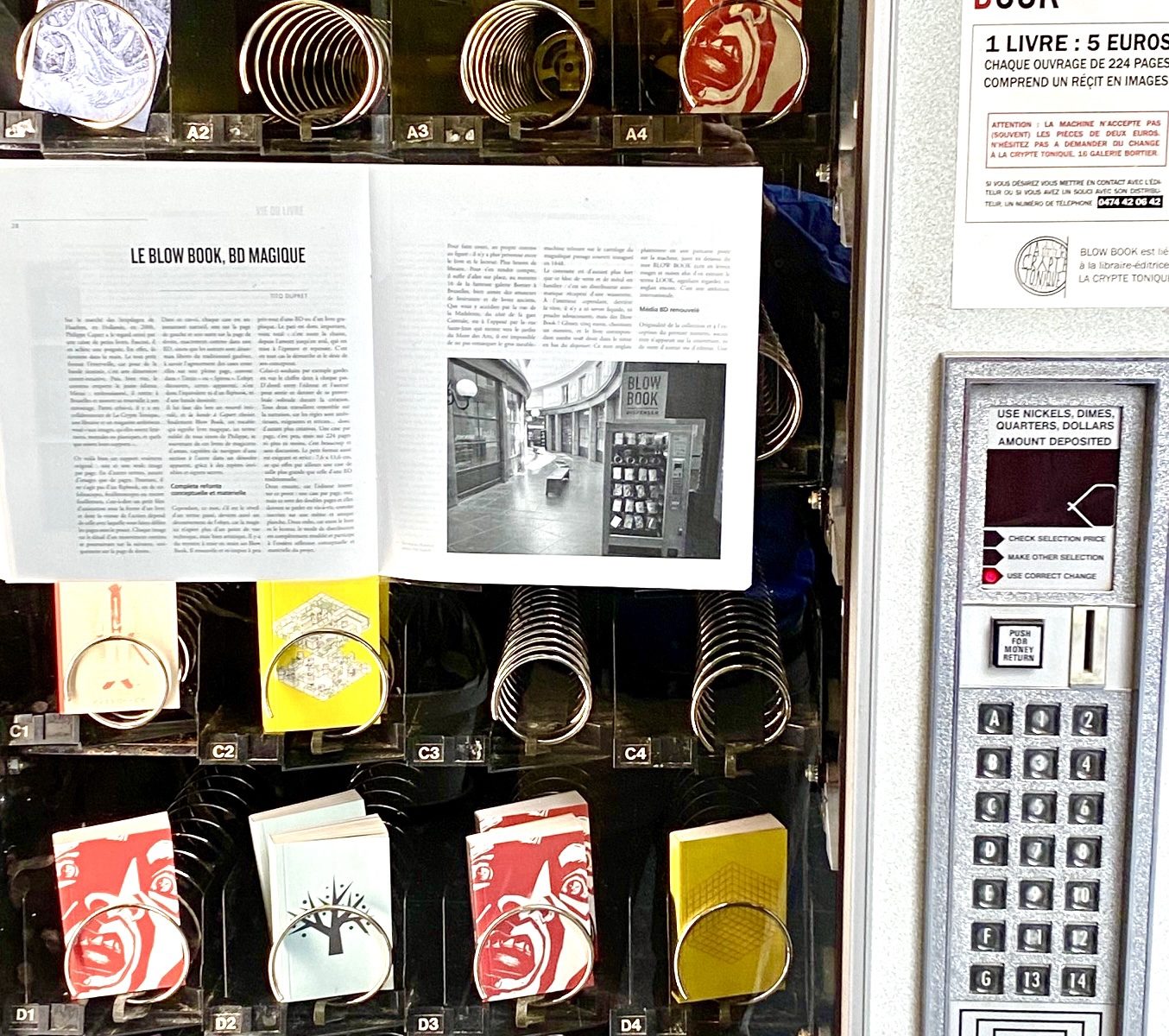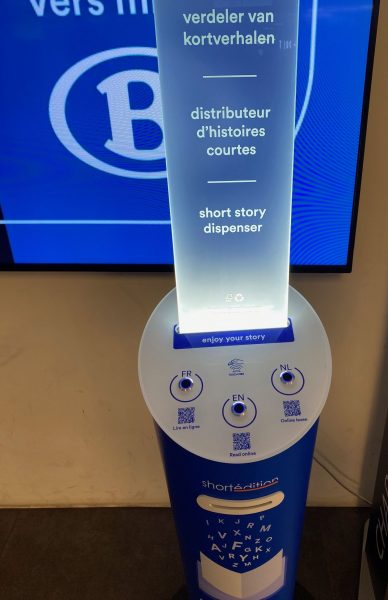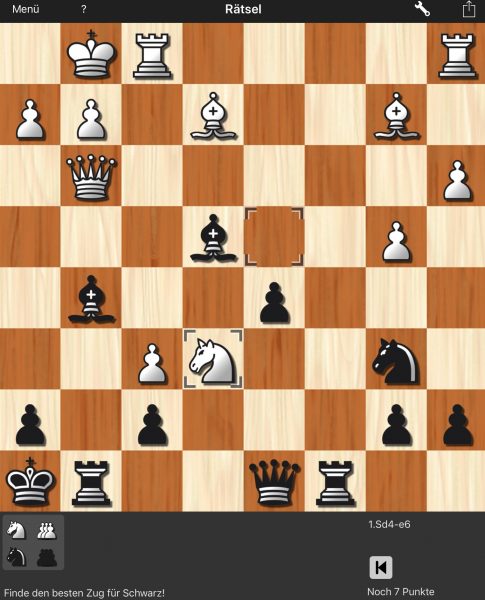In France 100.000 is associated with Monsieur 100.000 Volt Gilbert Bécaud due to his dynamic singing and performance style. Since August 2023 we now have an additional association with the number 10.000. Ten thousand m3 was the size of stones that came down from the mountains near the popular skiing resorts in the French Alps (Le Monde Link+video). To visualize the amount, a back of the envelope calculation with a standard container size of 25 m3 returns 400 loads of lorries to be removed from hard to access landscapes. Count this into the costs of running ski resorts.
A study in the scientific journal “Nature Climate Change” in 2023 highlighted the increasing risks to European skiing sites. Same holds for the Alpes in Switzerland. Some areas relying on water resources to create artifical snow do so in less and less safe areas. Costs accrue to communities who benefit only indirectly from the skiing hype, celebrating 100 years of Olympic skiing next year. After all it is big business to sell or lend equipment, provide hotels and meals for all those sports women and men.
The so-called collateral damage is probably even worse. Interrupted railways, bridges, motorways and traffic in general becomes a severe disruption for quite some time adding to the total costs of having fun in winter. Is it worth it? A tricky question to ask in a referendum. We shall have to revise our past decisions to expand skiing resorts in light of the new evidence of higher risks and costs involved. A book on 10.000 years of history of glaciers is full of side-effects of glaciers melting away, which cause instability to valleys on the sidelines. In the most recent break-up of rocks it is actually more the access to the skiing resorts that was blocked, but this demonstrates to all: passing this area now, is not without serious side-effects. 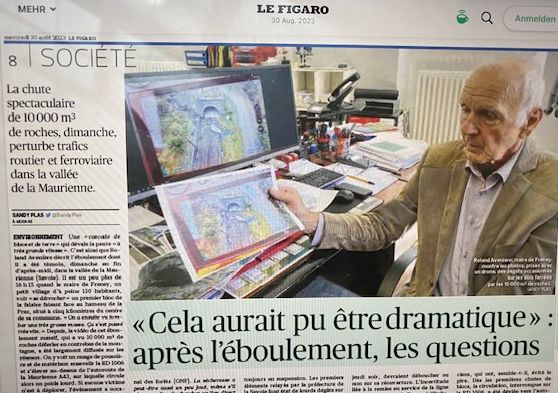
Everyday objects
If you were wondering whether everyday objects can be a piece of art, then the exhibition at the “Neue Nationalgalerie Berlin” is for you. Isa Genzken challenges our traditional view of everyday objects through small transformations of these objects. At first sight you “only” see something utterly familiar to you. A window, a radio, a rose or a wheelchair are immediately recognisable. However, all objects have a little twist to them causing some alienation, questioning or finding new connections. This is the stimulating experience of a visit of the exhibition. The booklet gives an informative overview of choice of sculptures chosen for the exhibition. Walking around in the spacious entry forum allows to appreciate the objects from many angles and in different lighting including twilight. Allow yourself to be challenged. Distancing your perspective beyond the obvious object you recognise broadens our vision of what we see and how we perceive it. The huge pink rose in front of the gallery overshadows even the monumental appearance of the Neue Nationalgalerie. In memoriam “Rosa Luxemburg” and Karl Liebknecht who were murdered not far away, near the “Landwehrkanal” in 1919.
Some visitors might like the skyscraper models she created to remind us that “design catastrophe” with the usual high rising buildings are pervasive around the world. Sculpture as architecture or architecture as sculpture has been her forward looking work from 2008 “Ground Zero – Hospital”.
With the construction work in full swing in the neighbourhood of the gallery with the design of a barn (Scheune) we understand the choice of the artist as a timely reminder that Berlin could be more daring in the architectural design. 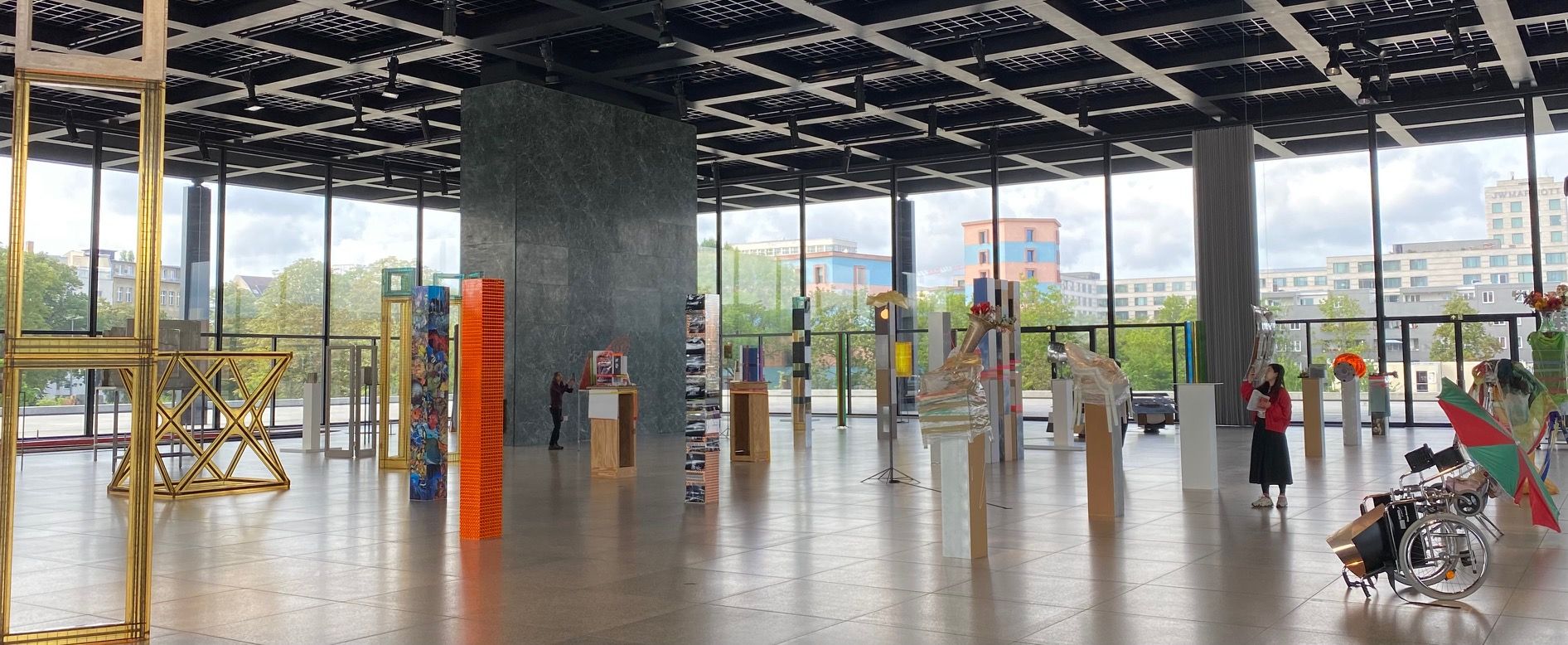
Smart watch
Das Handgelenk hat noch viel Platz für elektronische Geräte. Vom preiswerten Schrittzähler bis zur smart watch und intelligenten Armreifen oder sogar Ringen gibt es dort viel Potential für Innovation. Jenseits der Schritte werden mittels vielfältiger Sensoren eine Fülle von Daten erfasst. Datenschützer erschaudern geradezu. Das Potential für medizinische und soziologische Auswertungen dieser Daten ist immens. Vergleichbar mit einer elektronischen Waage, die Knochenmasse, Wasser und Muskeln erfasst erlauben die smarten Uhren noch mit Ungenauigkeiten, aber stetig besser werdend, kardiologische Werte und Schlafrhythmus zu erfassen. 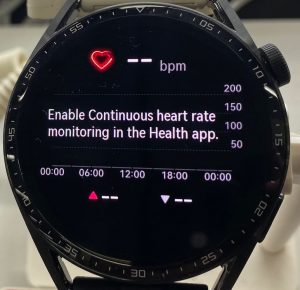
Mit Daten von tausenden bald Millionen Datenlieferanten lassen sich wichtige Studien zur Früherkennung von Gesundheitsrisiken durchführen. Plötzlicher Herzstillstand ist eines der immer noch wenig aufgeklärten Phänomene. Die Studie im LANCET digital health hat solche Daten ausgewertet und kommt zu der Schlussfolgerung, dass dyspnoea für Frauen und Männer der größten Risikofaktoren darstellt. Für Frauen wird Entwarnung gegeben für Diaphoresis, exzessives Schwitzen, aber nicht für Männer. Letztere sollten Schmerzen in der Brust ebenfalls ernst nehmen. Daten sammeln kann durchaus Leben retten. 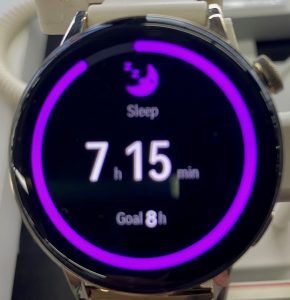
Dennoch droht dem Gesundheitswesen eventuell eine Welle an falsch positiven Selbsteinweisungen in der Notaufnahme der Krankenhäuser. Darauf sind wir noch wenig vorbereitet, inklusive der möglichen rechtlichen und finanziellen Konsequenzen. “Big brothers are smart watching you”. Müssen Ärzte die smarte Evidenz berücksichtigen, etwa so wie eine Patientenverfügung? Was wenn plötzlich der Notarzt unaufgefordert an der Tür klingelt? Wer hat meine Uhr gehackt, … , singt das Paulchen Panther jetzt.
Barbie explore
The film on Barbie after more than 60 years of the first puppets to arrive on the market is a huge money spinning exercise. Hitting more than 1 billion $ is really a huge box office success. More interesting even is the banning of the film in some countries like Algeria. This gives the film an interesting subversive touch to it, which we in the Western countries no longer see as something special. Emancipated women pose a threat to authoritarian regimes.
However, we see in the stereotypes of beauty-driven dolls not that much of an emancipatory chance. To view emancipation independent of the looks of a person is another interesting twist to the role in stereotypes of beauty. It is not only fun to play around with stereotypes, that is mostly, if you are not negatively affected by them (age, gender, ethnicity, extraordinary persons). A nice task for sociology and psychology to explain the working of stereotypes in society and possible remedies. Tolerance is a competence that needs to be learned and updated continuously, from early age onwards.
Therefore, the website created by the US Design Agency Rvnway offers an entertaining way to play around and learn about stereotypes. Perceived, generalized beauty or gender roles can be explored using the tool. Maybe some see themselves differently after such explorations. Everybody is a model. This is the message. www.bairbie.me will let you explore other formats of yourself. After 3-D rendering and printing your children or grandchildren will decide what role they would like you to play in their playfull, or virtual “real” life. I suppose many of us will be up for a big surprise. Go on and imagine in 4D. In the age of selfies all around us, all the time, we believe we are very modern, but the artists of the 19th and 20th century following all great painters before, frequently started their careers with an “autoportrait” or “Selbstbildnis” or series of those as they were aging. 
More Design
How about a subject like Design in school. Rather than the same old boring teaching manuals in art, music, economics or social science, young learners have always been attracted to making things by themselves. The theoretical context is then coming to the subjects and objects more naturally. Economics as market design, design social security for platform workers, sound or furniture design could bring in the creative potential of the learners. Lessons learned through subsequent applications or realizations of prototypes allows the link of theory and practice. A school garden would even be a fantastic cross-discipline learning opportunity.
The most difficult part is probably to find competent coaches to guide the learners exploring and designing. The world is not perfect, so why should learners not be confronted with imperfections in learning set-ups. The most fun part in science is when experiments go wrong, hopefully not too badly though. Catching learners by their curiosity is very likely to get them hooked on more thorny scientific questions as well. Across Europe holidays are coming to an end and millions of pupils go back to their benches and rigid curricula. We should really care more about the next generation.
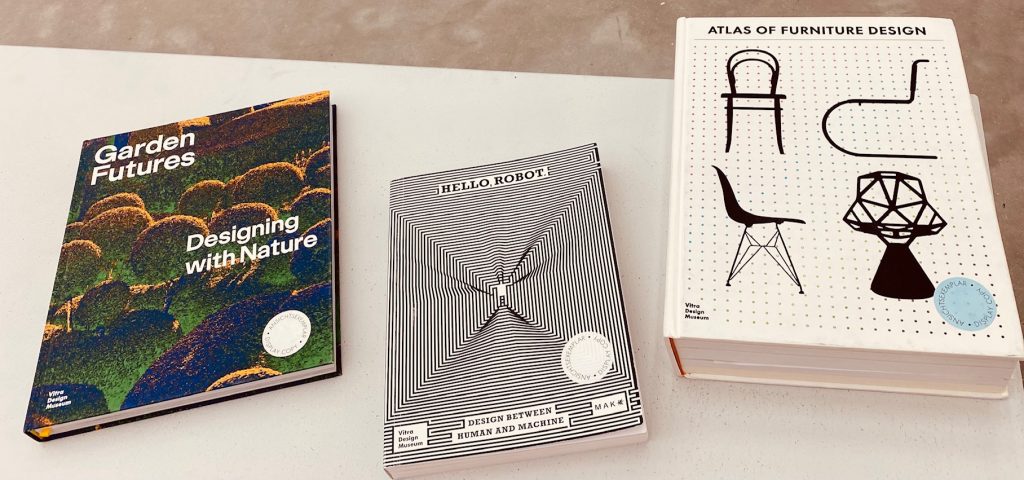
Calendar Time
We all use calendars to organize our time almost unconsciously. This is helpful to organize and synchronize our time together. Working time, family and individual time tend to use the same time structure to facilitate community. Work arrangements depend a lot on a common method to structure time. The work-life balance hinges a lot on synchronization of calendars and joint time slots. Towards the end of the annual vacation period in Europe the annualized change of calendars is still common practice despite most people going digital. Annual overviews allow to allocate and potentially synchronize calendars for major events or periods (next break, period devoted to learning, family planning etc.). A cleavage that differentiated Europe in the analogous times was that some countries like Germany use(d) chronological calendars running from 1st of January until 31st of December and counting calendar weeks (1-52). Many other countries have long ago moved on to “functionalist” calendars running based on the school year from 1st of September to 31st of August each year. Different planning horizons appear to be the obvious outcome. Whereas the former might focus on the planning of the end of the calendar year 2023, the latter functionalist calendars begin to structure the new year-long period 2023-24 including the next summer break towards the end of the next schooling year.
In France you start end of August 2023 to plan ahead until end of August 2024. This comprises the Olympic games in Paris 2024. Don’t worry, most tickets are sold out already and attributed through lotteries. When people in Germany start to buy calendars for 2024 and organize a printed calendar, this occurs traditionally around Christmas time and New Year’s celebrations.
Specific professions follow their own calendar time. Academic years or accounting years may well differ from the other annualised organisation of time through calendars. Of course, religions have established their own calendars just as migrating birds or French revolutionaries in the 18th century. Meteorological calendars or sensor-based structuring of annual sequences of seasons like in trees, plants or insects add to the impression of the existence of multiple clocks. 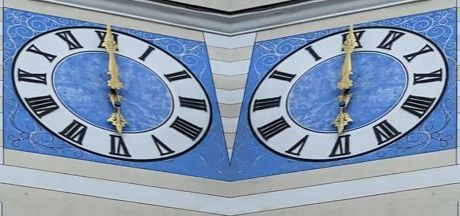
A de-synchronisation of these multiple calendars increases the need to coordinate societies within or society and the economy, religion or ecology. I liked my printed calendars over the years. Now I shall print different versions for different countries and functions. I still wonder, if my life got easier or more complex. Probably, it has only become easier to organise complexity and diversity. Clock 6 video
Corbusier ZH
Realizations based on the theory of architecture by Le Corbusier are always worthy of visit. Passing through Zurich (CH) allows to discover another fine example of a villa he designed in the neighborhood of the old town. Within walking distance from the lake Zurich the spacious building allows just like the Paris example for an exhibition of art work within the villa. Horizontally stretched windows and a terrace on the roof make these villas look very modern. Rooftop bars and restaurants just stage a revival in inner cities as cool locations. Le Corbusier anticipated this long ago. Theories can have a long half value time of lasting.
The materials applied in the realizations were obviously less durable. This is the reason why the villa had been closed for renovations for many years. The reopening now shows the splendid views from inside out as well as from the outside. Colors are especially interesting in this example. Nothing is left to or build by chance. The Design language is spelled out in each detail down to door handles. An ongoing exhibition about the deterioration of materials and in some cases even toxic materials helps to understand the necessity to be aware of material science in construction. This makes visits even more informative. The confrontation of vision and sustainability becomes an additional topic also for the theory of architecture.

Too big
Too big to fail. We all thought that after the financial crisis some fifteen years ago, we would not deal with the same kind of problems again. The banking sector in Switzerland has proven us wrong. One of the 2 big banks Credit Suisse in Switzerland was about to default and asked for 170 billion state guarantee middle of March 2023. Only after a forced merger with the other big bank UBS (which was rescued in 2008 already) and the huge state guarantee the solvency of the even bigger bank was re-established. Tax payers were expected to foot the bill. Less than 6 months later the Finance Minister Karin Keller-Sutter announced that there is no longer a risk for tax payers to pay for the mismanagement of the bankers involved. This is a relief for the political system which is going to the polls next year.
Many unresolved questions remain. Financial market supervision is faulty to say the least. Banking left to bankers as controllers is risky. Apparently fines do not work only prohibition to exercise similar functions (internationally) again is likely to be effective (NZZ 2023-8-9 S.19). Other remedies lie in a complete overhaul of the governance system of banks and beyond. Supervisory boards should in theory be able to assess the risks incurred by the management board. Failure to do so has no consequences for them either. Representatives of the employees in the board is likely to introduce more longer term concerns into decision-making. Saving jobs is a valuable goal not necessarily in the interest of investment bankers. Capitalism is at high risk of survival and with it our democratic systems. It was not a bank in Niger that got into trouble, but at a major European financial center. Too big to fail in a tiny country still sends shivers throughout Europe. And the other big bank is growing even bigger now, probably un-savable now. If I had a bucket of Swiss Franks, I would rather sell them.
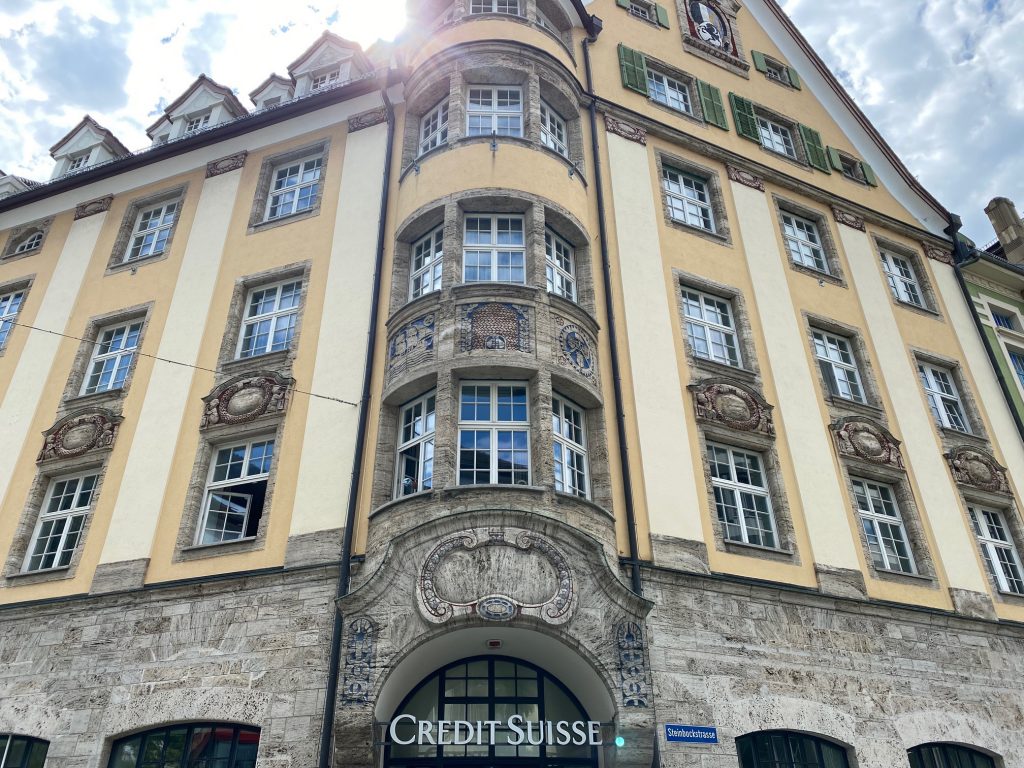
Sichtweise
In vielen Fällen stimmt die eigene Sichtweise nicht mit der Sichtweise von anderen überein. Das kann sich bei Personen bis hin zu Persönlichkeitsstörungen auswachsen. Bei ganzen Gesellschaften, Kantonen oder Regionen führt die verzerrte Selbstwahrnehmung zu gewissen Befremdlichkeiten oder Entfremdung. Die Lokalpresse der Südostschweiz zeigt zwei fröhliche BauarbeiterInnen, die gemütlich auf ihre Baustelle zuwandern. Weit gefehlt. Der Helikopter hat längst die Hauptarbeit übernommen und diese BauarbeiterInnen (à la Heidi) gehören einer Vergangenheit an, die längst untergegangen ist.
Aber Zeitungen verkaufen sich lokal wohl besser, wenn sie an dem idyllischen Bild der Vergangenheit als Selbsteinschätzung und Selbstvergewisserung festhalten. Die Fremdsicht kommt eben auch nur von Fremden. Die Personen zahlen letztlich gerne für den Lift, um das Naturspektakel der Alpen auf 2000m noch eindrucksvoller erleben zu können. Dabei wäre mit Bussen und einer kleinen Bergwanderung dasselbe Panorama bei höherer Endorphinausschüttung zu erleben. Ob es für das Transportieren der Mountainbikes im Sommer nach oben und mehr Skifahrenden bei weniger Schneegebieten im Winter eine solche Investition benötigt, die noch mehr Grünflächen verschwinden lässt, bleibt äußerst fraglich. Der Kampf zwischen Mountainbikern und zu Fuß gehenden Personen wurde bereits durch getrennte Strecken entschärft. Zwischen den Menschen, nicht aber die weitere raumgreifende Nutzung der Natur. 
Geologie
Mehr GeologInnen braucht das Land. In der Schweiz beunruhigen derzeit zunehmende geologische Risiken. Der Klimawandel lässt Permafrost in den Höhen schmelzen, der jahrhundertelang Gestein zusammenhielt Gleichzeitig sinkt die Schweiz, nicht die Aktienkurse, selbst die Credit Suisse ist bereits untergegangen, aber rein geologisch, nüchtern betrachtet (NZZ, 2023 „Die Schweiz sinkt“). Das verlangt nun doch einige gründliche wissenschaftliche Untersuchungen. GeologInnen messen bereits mit unzähligen Messstationen die Bewegungen der Erdkrusten. In der Schweiz lässt sich sicherlich mit dem zunehmenden Abschmelzen der Gletscher und der Veränderung der (mehr) Regenfälle statt Schneefälle in den frühen Wintermonaten eine neue Gefahrensituation aufzeigen, nicht nur für den Tourismus. Die üblichen Reflexe: mehr Investieren in Schutz und neue Versicherungen wird alleine nicht mehr helfen. Biodiversität auf den unteren Skipisten ist eh Fehlanzeige, aber die Baumgrenze steigt. Das könnte genutzt werden, statt die vielfach kranken Fichten, die wegen ihrer kurzen Wurzeln kaum ein Gewitter überstehen (Ruinaulta vom 4.8.2023 S.6 und S.16-18). Diese Gewitter werden durch den Klimawandel wahrscheinlich häufiger werden. Noch mehr Versicherungen werden die Welt nicht retten können. Wir werden umdenken müssen auch wenn Verhaltensänderungen sehr schwerfallen.
Das Abbrechen von Bergspitzen, wie am Kantersteg (BE) oder der Bergsturz am Piz Cengalo 2017 in Graubünden, ereignen sich dann eher in den wärmeren Sommertagen. Die GeologInnen werden viele Arbeitsstellen haben (nicht nur im Geopark Sardona UNESCO Welterbe) und gehören zu den Berufen mit höherer Nachfrage durch den Klimawandel. 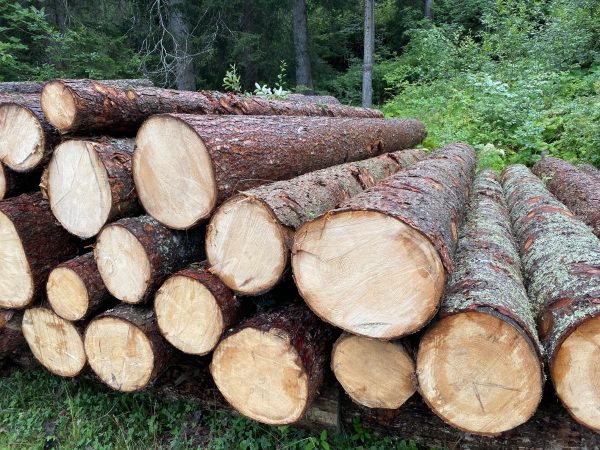
Work Satisfaction
There is an important distinction between job satisfaction and satisfaction with one’s work. Being satisfied with the work you have done or something you created or co-created has become almost a privilege. Production in capitalism has mostly different objectives like rent seeking rather than satisfaction with one’s work. Compromises between both are a major learning process about the functioning of labour markets. Remote work, for some, contributes a lot to more job satisfaction. For others a healthy work environment is the top priority. Many people however focus simply on pay packages and this is often out of sheer necessity to escape poverty eventually. Trades have a tradition to allow satisfaction with one’s work, more than most jobs in industry. Flat hierarchies and subordination to your own standards, rather than pressure from supervisors, are much more common. Recognition of your work adds to the pay you receive. Job turnover is related to job satisfaction but also to satisfaction or even identification with the product of your work.
There is more to work than pay. Recognition in form of winning a price in a competition may help to keep awareness high that pay is only one element of remuneration. “meilleur ouvrier de France“ is such a kind of recognition. It encourages people to try new things and test new ideas. This is a major source of satisfaction with one’s work. We might even feel sorry for someone shouting “I can get no satisfaction”. He probably has to try in a simpler or different fashion rather than to try harder. The city Dijon in Burgundy seems to have a pretty high number of people with high levels of work satisfaction and happy to show it.
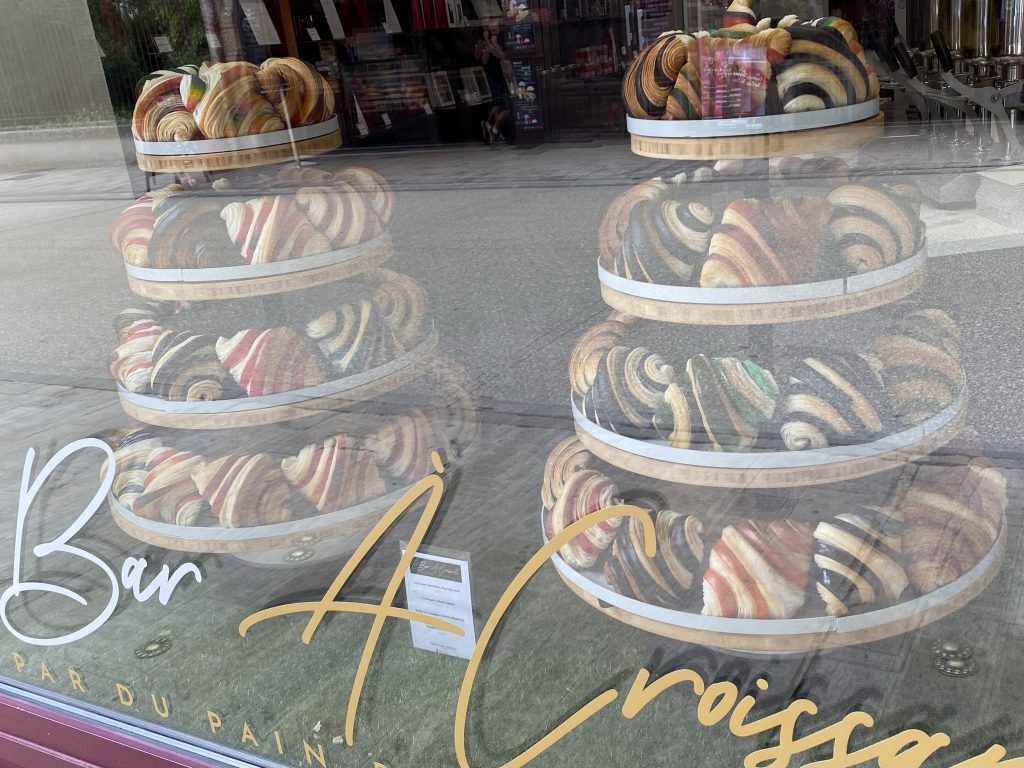
Greenwashing
We mostly think of greenwashing of big polluting industries , but there many other ways to cheat with green labels. When you travel through green Switzerland you might be surprised of how the Swiss way of greenwashing works. In order to survive as tourist attraction with less snow (Study published in Nature Climate change 2023) and reduced numbers of trees, greenwashing has to happen quickly before tourists arrive again.
The challenge is to clear your sick parts of the forest quickly and to build new ways for fast lifts to heights in the mountains where you are likely to find snow at least for the next 30 years after which the investment is amortized. (quote from Neue Zürcher Zeitung 5.8.2023 p11). This all is carried through in speedy fashion and probably in the most polluting way you can imagine. Heidi would cry in the arms of her grandfather and join Greta in the school strike.
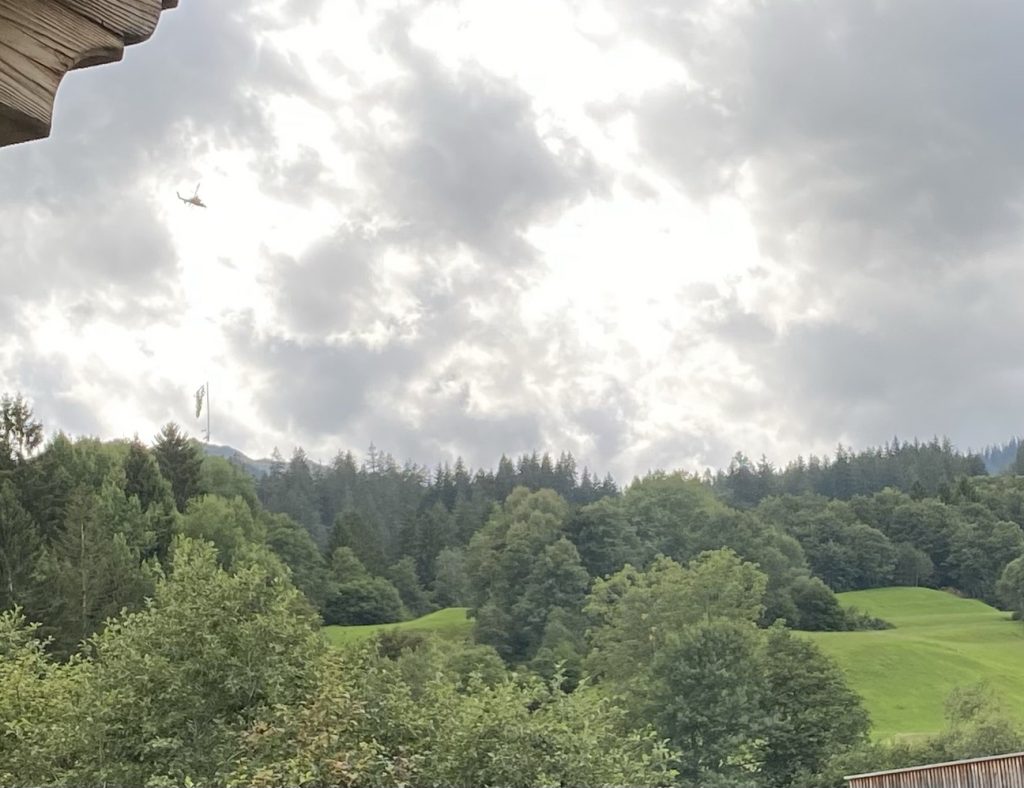
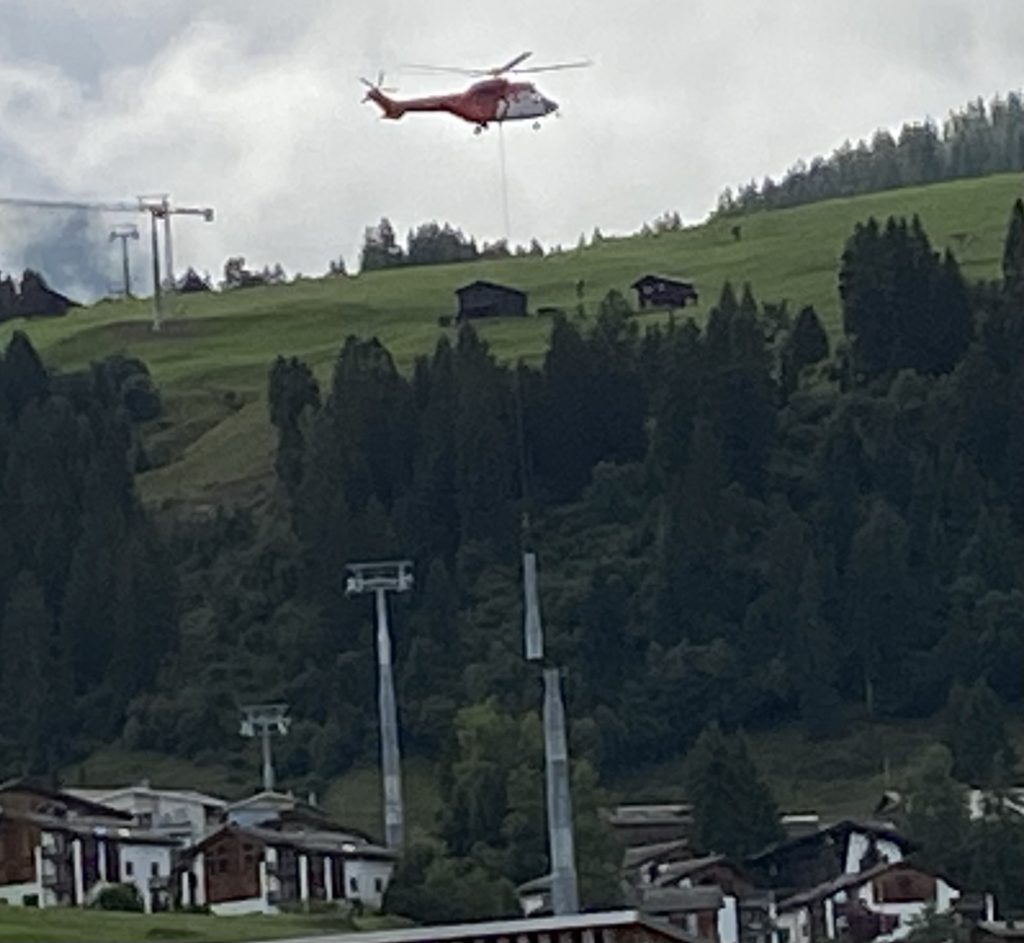
Gartenwelt
Gärten sind eigene Welten. Selbst im gleichen Garten sehen verschiedene Menschen unterschiedliche Dinge. Man stelle sich nur sogenannte Farbenblindheit vor. Jahreszeiten bieten zusätzliches Ansichtsmaterial. Animalische Perspektiven würden für erstaunliche Überraschungen sorgen. Nach den Vorarbeiten mit dem Polinatorprojekt online hatten wir die Gelegenheit eine konkrete Realisierung einer solchen Gartenwelt zu durchwandern.
Der reale 3-D Eindruck ist überwältigend und bringt die virtuelle Erfahrung des Gartens im Lauf der Jahreszeiten in die reale Welt. Zu jeder Jahreszeit, selbst im Hochsommer, ist viel Farbe im Spiel und das auf mehreren Ebenen. Paradiesische Gartenwelten erschließen sich bei der Bewegung im Garten. Das wirkt wie ein Ansporn zu eigenen oder besser gemeinschaftlichen Anstrengungen einer vergleichbaren Realisierung. Genau das ist auch Teil der Ausstellung und des Katalogs „Zukunft der Gärten“ im Vitra Design Museum.
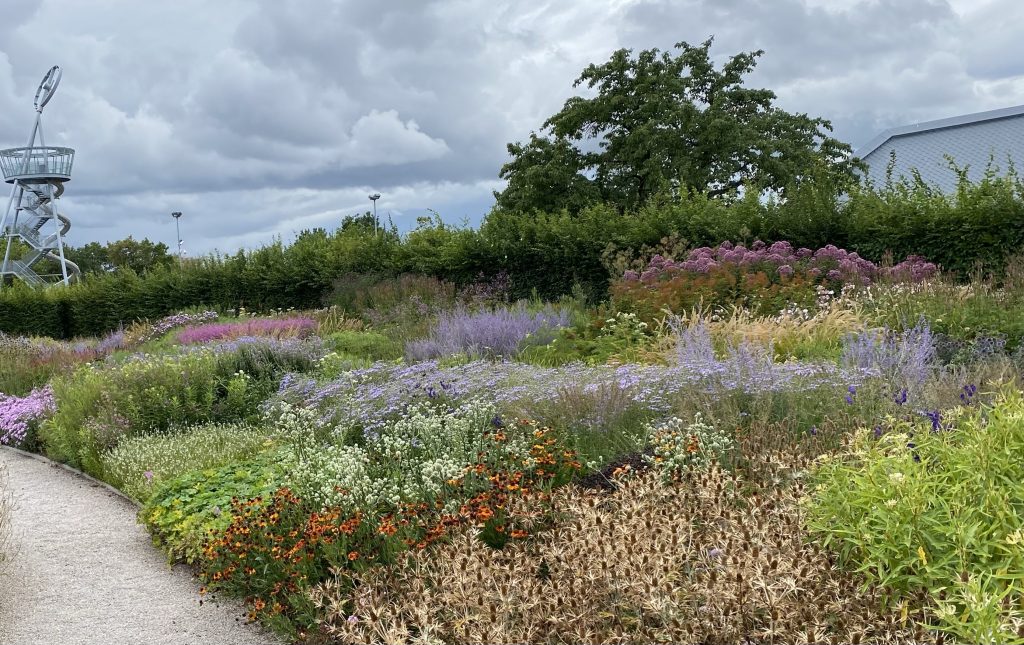
Nuclear War
In the last few years we have witnessed a new surge in the investment in nuclear energy on the global level (IEA). Ever since the foundation of the initiative “International physicians for the prevention of nuclear war” in the 1980s, there have been relentless reminders of the devastating effects of such a war. In 2023 we are all aware of the real risk of attacks on the biggest nuclear power plant located in Ukraine. Nevertheless we continue to invest heavily in power plants that constitute a massive risk at times of war between irresponsible nations. Besides the publication of many high quality papers in The Lancet there is regularly space to keep the awareness of the dangers of nuclear war at a high level. Too many politicians shield themselves from dealing with such realistic dangers in the interest of supposed cheap and save energy for all. Both is no longer the case. Nuclear energy is expensive and unsafe in peace and horrible in war times. We cannot afford to abstract from these rising risks. The hype about anything nuclear like in the 1980s is grossly displaced (image of book below).
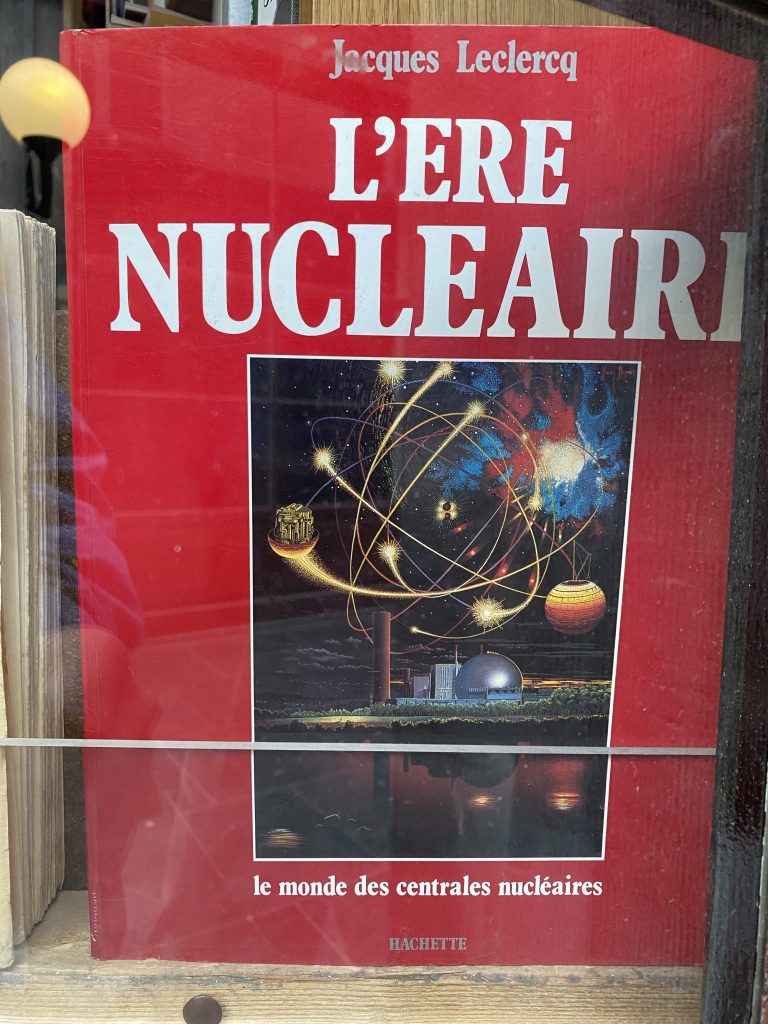
Anger
It feels like we live in the “age of anger”. Anger was a predominate feeling in the “French yellow vest movement” spurred by sharp increases in petrol prices. In Germany the notion of “Wutbürger” had a short career to express anger of citizens against, against whatever could arise anger. There are plenty of issues of course that will cause arousal in public politics. The more a government enacts change, be it necessary or not, the more it is to arouse its citizens. Parliamentary democracy is thought to solve this through majority voting of the equally represented in parliament. Minority rights have been installed to safeguard the majority to become too overwhelming, but any close decisions on hotly debated topics are likely to cause substantial anger within a society.
This is far from being an issue only in Western democracies. Pankaj Mishra claims, this is a world-wide phenomenon and history provides ample examples for it. In his book on “The age of anger” he challenges the predominantly Western political theory, deriving from an opposition of Voltaire’s and Rousseau’s political thought to hold the individualisation and globalisation of an economic model, traditional capitalism, responsible for the rise of anger across the globe.
This critique of capitalism is now translated into French. Several movements of anger in France probably find some unifying roots of seemingly unrelated outbreak of anger, violence and subsequent repression. Old arguments of critics of capitalism stand up again. The challenge to democracy comes from the extreme right even more than from the extreme left. Re-imagining capitalism is needed more than ever to safe the survival of democracy. Participative democracy like in Bürgerräte in Germany or deliberative democracy practiced by President Macron in France are an important part to stimulate involvement of more people in the preparation of decision-making. Not perfect as procedures, but small steps ahead to confront and address anger of the citizens and people at large. 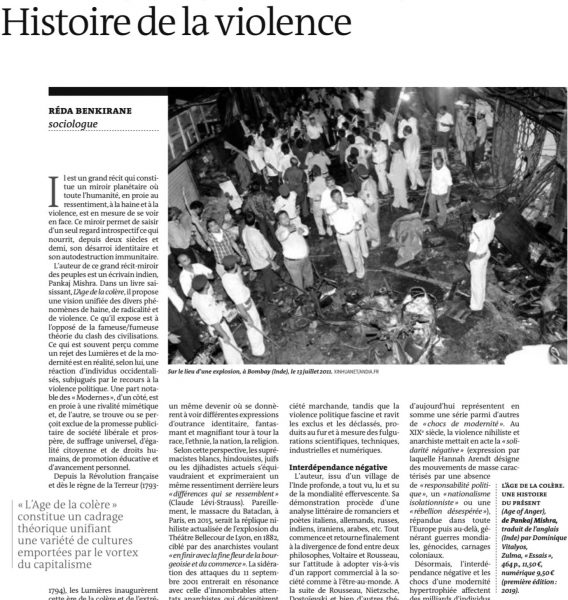
Work Subordination
One of the defining principles besides the job description, working time, working place, remuneration of a work contract is the subordination to a superior. The employment contract entails some more or less strictly executed form of direction, but a right of direction nevertheless. This element of subordination has become a major issue in the definition of whether you are effectively an employee or a self-employed person. The digital revolution had enlarged the kinds of subordination. Platforms and algorithms, that distribute work among several employees (but named platform workers) disguised the subordination to a superior level of management to the platform and its seemingly anonymous algorithm. Many young riders were saying, I don’t like bosses, but I am willing to accept a “technical” platform that distributes work tasks only seemingly in a non-discriminatory way. Due to a failure of labour legislation to regulate early enough a thriving model of fake self-employment developed throughout Europe and beyond. Labour Courts have contributed a lot to correct the disguised subordination. Even Uber is advertising that they only operate as a broker of tasks, but have no subordinated employees. The related issue of subordination remains largely the same. Subordination to an algorithm of the distribution of tasks is the end result.
Many start-up enterprises use Kanban boards to facilitate project and team management. Shifting tasks between employees, introducing new tasks and self-selection of tasks are potentially subordination-free allocation of tasks (example software). Flat hierarchies seem more manageable through the use of such tools. The number of tools that integrate other office functions is impressive. When testing such tools, that become more popular also in the distribution of household tasks, beware of the data-hungry nature of such tools. For example, https://trello.com/ warns correctly in the small print that for its full functionality it would need to have permission to use “your” camera, microphone, contacts, photo library, calendar etc.
This demonstrates that subordination, nowadays, is complemented by the algorithmic use of a lot of privacy, we would never have agreed to a boss in person should even ask for. The new and old subordinators have powerful tools at hand, the subordinated will have to get their act together and limit the amount of subordination they are willing to accept.
Again, this is a generational topic. The low threshold to accept technical subordination in younger generations, your autonomous level-5 car is breaking earlier than you even perceive a risk, is confronted with the higher threshold to accept personal subordination for youth. Interestingly, for older generations the obverse is true. All in all, we have ample reason to rethink and re-define also in legal terms the manifold, disguised and new forms of subordination related to work.
Work Remote
Since the COVID-19 crisis we witness a steep increase in the interest to working from home or from remote places. Originally during the pandemic spread of the virus, remote work was the only way to stay in contact with employers and fellow employees for all those not considered as essential workers. Many employees and employers, for the first, experienced that working remotely can have multiple positive effects. First of all, saving time and stress as well as CO2 reduction due to less commuting is beneficial not only for individual employees, but also for society at large. These benefits are substantial.
In my opinion the most substantial consequence is the rethinking of several fundamentals related to work that have gone unquestioned for decades or even centuries, which is: Work happened predominantly at the work place. Digitalisation had changed this partially already, but the willingness to implement far reaching reforms related to work for millions of employees remained rather limited before the Covid-19 pandemic. Nobody had to go on strike to force employers to accept remote work. Suddenly employers, in some instances, were begging employees to please do your work from home or anywhere else. Now we are in the historically rather unique situation that both employers as well as employees try to reap the benefits of the unexpected revolution of remote work potentials including new digital tools to organise remote work (example “scoopforwork”). Employers found out they can do with much less office space than they previously thought they would need to accommodate all employees. Employees found out that saving on commuting time saves energy and frees time resources for other, potentially more healthy ways of life. A new balance of work and private life could be arranged at home. So much for the theoretical expectations.
In practice many women realised that they suddenly found themselves thrown back into working at home and in the home all the time again, with men still less willing to share household work equally. Unsuitable work spaces at home, arranged rather ad hoc, became a health and safety issue usually considered to be part of the employers’ responsibilities.
The results of the real-life experiment of forced remote work are still under scrutiny. To turn them into beneficial arrangements of voluntary remote work which is empowering, emancipating, increasing degrees of freedom for employees would be a huge step ahead. The full spectrum of negotiations is involved. Legislation, collective agreements and 1-on-1 solutions are needed to reap the benefits on all levels. Comparable to the industrial revolution during the 19th century, drawing millions of workers into factories and coal mines, we are at the beginning of a new era of digital and remote work that governs solar and wind farms for energy provision as well as 3D printing of industrial components.
It seems that we shift from the blue collar to the white collar to the no collar world of work. Working remotely in my t-shirt under the cherry tree is not the worst of a revolution (guard against cherry picking by employers and new layers of inequality). It might take a generation or two to accomplish this. With threatening, pervasive climate change we probably have to make it happen sooner rather than later.
Wessen Wetter
Wessen Wetter ist es denn? Mitten in einem Gewitter deklamieren Leute heute noch, “Um Gottes Willen“! Selbst in 2023 vereinen sich Leute und beten für Regen. Dabei wissen wir längst, wie der Regen entsteht, Feuchtigkeit in Wolken über weite Strecken zieht und schlußendlich als Regen über uns kommt. Dafür haben wir Dächer vorgesehen, mehr oder weniger solide und dicht. Regenwasser sammeln, sickern lassen, Rückhaltebecken erweitern; das sind alles Vorkehrungen gegen größer werdende Unwetter des menschengemachten Klimawandels. Beten sowie Meditieren kann dem Einzelnen helfen, sich zu fokusieren und Kräfte zu sammeln. Gemeinschaftserlebnisse stärken Resilienz.
Wetter ist in der Tat eine tägliche Art von Gemeinschaftserlebnis, oft lokal begrenzt, aber meist regionenspezifisch und manchmal ein landes- oder gar europaweites Phänomen. Neben den staatlichen Meteorologischen Instituten gibt es bereits immer mehr “citizen science” Projekte zum Wetter. Das belgische Beispiel (s.u.) zeigt eine Vernetzung von Bürgerinnen, die Spaß und Interesse am Wetter und am Teilen sowie Partizipieren haben, kann das Messstationsnetzwerk der staatlichen Wetterdienste erweitern und eine alternative Vorhersagemöglichkeit bieten. PollenAPPs nutzen ebenfalls die Leidensstärke von allergischen Personen, um ihre Pollenbelastung spezifischer zu erfassen und Prognosen zu verbessern.
Ciitzen Science ist ebenso ein wechselseitiger Lernprozess, der das Wissen und Methoden einzelner Wissenschaffenden quasi basisdemokratische “bottom up” Wissenschaft gegenüberstellt. Stärken und Schwächen der jeweiligen Vorgehensweisen müssen untersucht werden, besonders mit Blick auf “fake news” oder “fake data”. Nicht nur erschreckend viele Forschende in der Wissenschaft produzieren “fake data and science” (Sabel et al. 2023) für fragwürdige Reputation und Karrieren. Bürgerinnen, die Daten sammeln und eigene Analysen, Vermutungen oder Hypothesen vornehmen, können Wissenschaft erweitern, andere ermuntern und wertvolle, viele, kleine Beiträge leisten.
Schwarmintelligenz beim Wetter praktizieren bereits die Schwalben. Das könnten wir vielleicht von diesen lernen. Bei Vervier in Belgien sowie an der Ahr in Rheinland-Pfalz sind mehr als 100 Menschen gestorben, wegen unpräziser Vorhersagen und Verzögerungen bei der Übermittlung der akuten Gefahrensituation.
Citizen Science kann Leben schützen, genauso wie es andere dringend nötige Freiwilligendienste bereits bewiesen haben. Das sind mal ganz andere vielfältige, bunte Wetteraussichten. 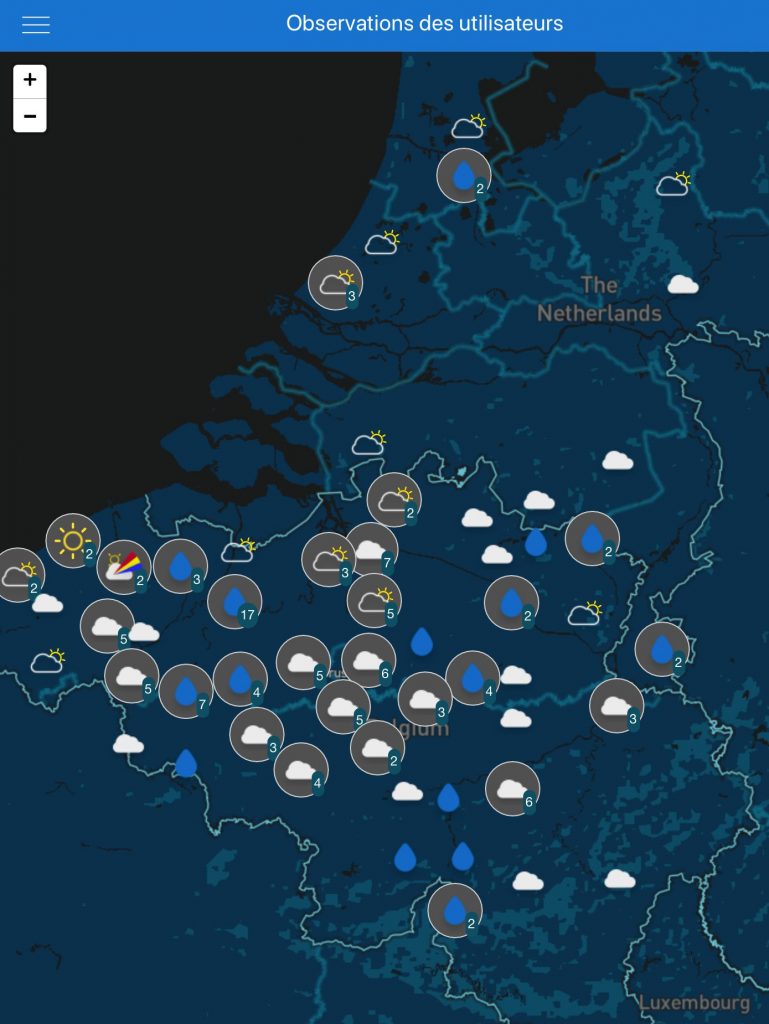
Wetter
Heute ist jede/r ein Hobby Meteorologe/in. Vor länger Zeit scherzten wir noch: Kräht der Hahn auf dem Mist, ändert sich’s Wetter oder es bleibt wie’s ist. Das zwar heute immer noch richtig, aber die Wettervorhersagen für den Hobby-Wissenschaffenden sind komplizierter geworden. Der niederländische Wetterdienst berichtet, täglich fallen 500 Gigabyte an Meteo-Daten an. Damit wäre unser Mobiltelefon dann schon mal längst voll, jeden Tag von Neuem. Wir nutzen meistens nicht nur eine App, sondern eine mit Regenradar („Rain today?“), stündliche Windvorhersage („Windfinder“), fürs Drachenfliegen oder Kiten, Pollenflug („Pollen“) nicht vergessen, sortiert nach persönlichen Allergenen.
Wer es dann noch etwas wissenschaftlicher möchte, der benutzt die aufbereiteten Daten in Frankreich, die gleich die 25-jährigen Durchschnitte mit Tagesverläufen der Temperaturen samt Höchst- und Tiefstwerten. Damit lässt sich dann vorzüglich fachsimpeln zu Erderwärmung, Klimawandel und Traumreisen nach Cannes (Nizza) mit seinen viel zu hohen Durchschnittstemperaturen im Sommer 2023. „Homo faber“ von Max Frisch lässt grüßen, nur ist es kein Fotoapparat, sondern das gleich mehrmals tägliche Ablesen der Außen- und Innentemperaturen, samt Luftfeuchtigkeitswerten und Informationen diverser Apps. Nach diesen Akten, Fakten und Datenstudium lässt sich die tägliche Ankleidungsentscheidung treffen. Kurze oder lange Hose, Regenjacke, T-Shirt oder Pullover. Vielleicht gehen wir auch einfach zur Arbeit oder nach draußen und genießen die Abwechslung. Das Wetter ändert sich, meist ohne unser Zutun oder Abschätzung. Genug gekräht und wieder runter vom Mist. 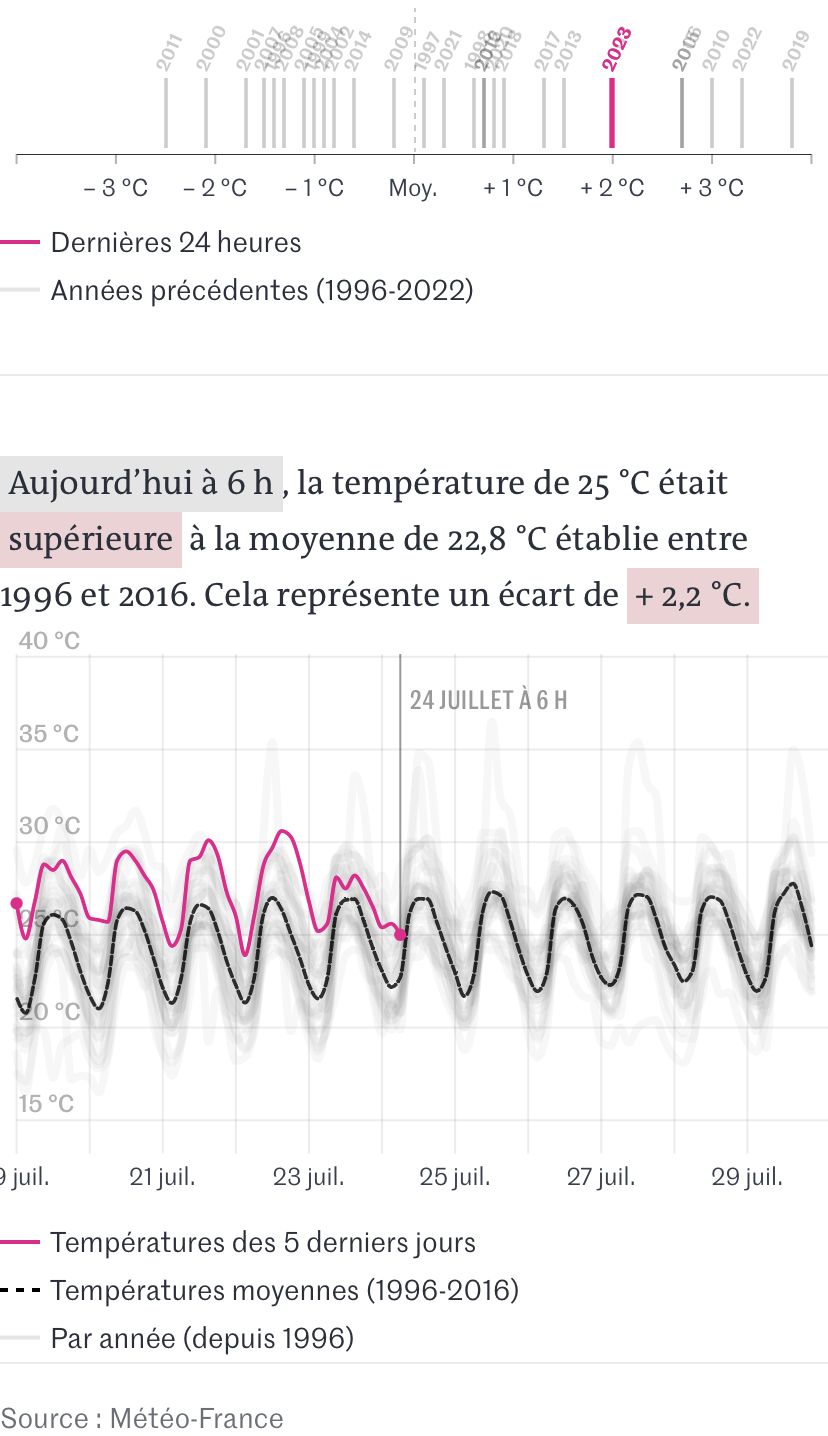
Unwinding violence
A common metaphor to describe rising or erupting violence is the “spiral of violence”. In exerting violence by one person or group, the response of the other person or group is even more violent and, potentially, the response to the response makes use again of more violence. The spiralling up of violence is hard to stop or to reverse. Law as well as its enforcement has to play a major role in this process. However, if the police violence is involved as part of the spiralling process the process gets even more complicated. Beware of the beginnings of such a process.
In France in July 2023 the debate about violence is wide open. Contributions to the debate in Le Monde deal with the discussion to claim equal treatment of violence from “fundamental ecologists” as well as extremist defendants of industrial agriculture (Stéphane Foucart). Both sides became more radical in their actions and threaten an escalation in case of governmental inaction. The “triangle of silence” is also a breeding spot with a potential for violent confrontations. Groups in society that have no voice in parliament or local governments frequently use violent actions to raise awareness to their concerns as politics and media tend to ignore “not so nice” images and reporting from areas with multiple disadvantages and social confrontations.
One of the proposed solutions by Marcel Marloie (published in LeMonde) proposes to rethink urban planning deviating from the path proposed originally by Le Corbusier. Instead of offering public parks that are cultivated (and policed) by the local government, entrust areas of collective gardening to the disadvantaged communities. The empowering role is, to master your own piece of happiness. The “bonheur à la Voltaire” is likely to increase attachment to your local and neighbouring community. Of course, this is not evolving without conflicts, but these are processes of accepting compromises and mediation rather than violent resolution of conflicts or aggression out of desperation.
Contrary to the belief that some big projects (Olympic games in Paris) should contribute to unite a nation(s), it might well lead to further segregation of persons who benefit from the games and those who are unable to enjoy some sort of participation in the event. Further gentrification of Paris is likely to be the result. Poorer or lower middle-class people will no longer be able to live in the renovated suburbs that have more public space being privatised and turned into for profit activities. The challenge is to build areas that enhance trust in people, trust in institutions and politics. Schools, associations, trade unions, political parties and social institutions have an important role to play in this respect. The way forward is with more communication and deliberation, not less, especially for and with the most distant groups of a societal consensus. 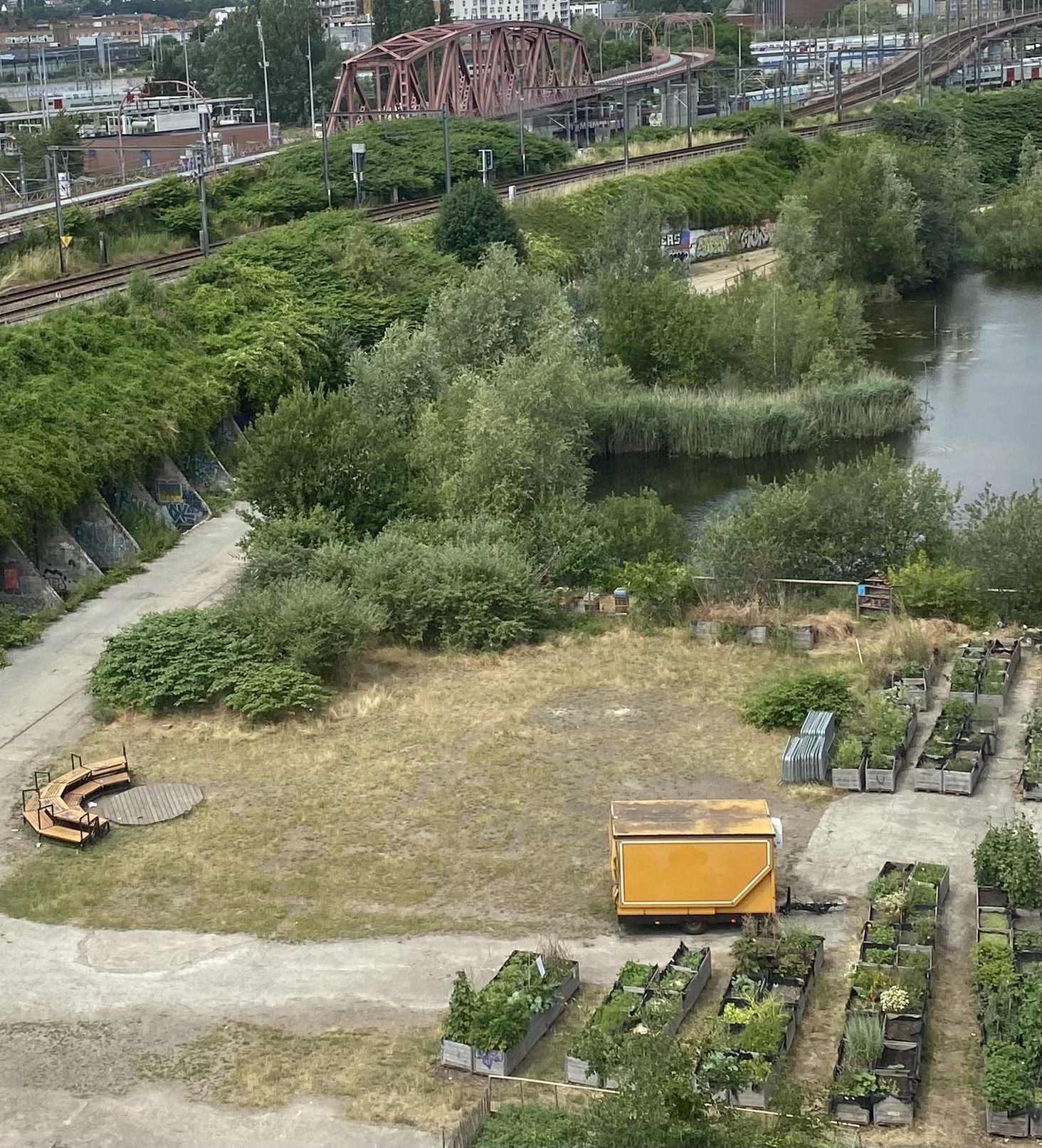
Happy
“Don’t worry, be happy”. Most people might remember the song of the late 1980s by Bobby McFerrin. Very popular at that time already, it simply took a popular phrase from an Indian mystical preacher and then take this and compose an easy-going melody. Simplicity is the art here, not the complex arrangement of voices or orchestration. Similar to the shifting mood of the late 1980s when eventually even the Berlin wall came down, we are still in need of finding simplicity again.
This is a kind of a good starting point for the visit of the happiness exhibition in Brussels. At the beginning of the exhibition, you do a bit of reading on the neuro-psychological and sociological foundation of happiness to then move on to the more fun part of the exhibition: immergence into rooms of light and colours. Sound complements the visual experience decently. It is interesting to witness that children are immediately seduced by the joyful atmosphere and feel very comfortable in the rooms. Adults are more reluctant to let lose. Drop defences and walls we have become used to and just let go of our concerns of day-to-day hustle. “Don’t worry, be happy”, at least for a while. You deserve it.
The entry price of 16€ at the door is a not-to-be underestimated as an impediment to an entry into the world of happiness in Brussels. Children are free of charge, most of them are happy anyway if their parents spend time together with them. Happiness for many in society remains still a challenge. Art could contribute more in this direction as well. On the “Mont des Arts” happiness is near, it takes just some time and you are very likely to feel the effect of the artist’s creation through splendid interior design taking our senses and emotions seriously. 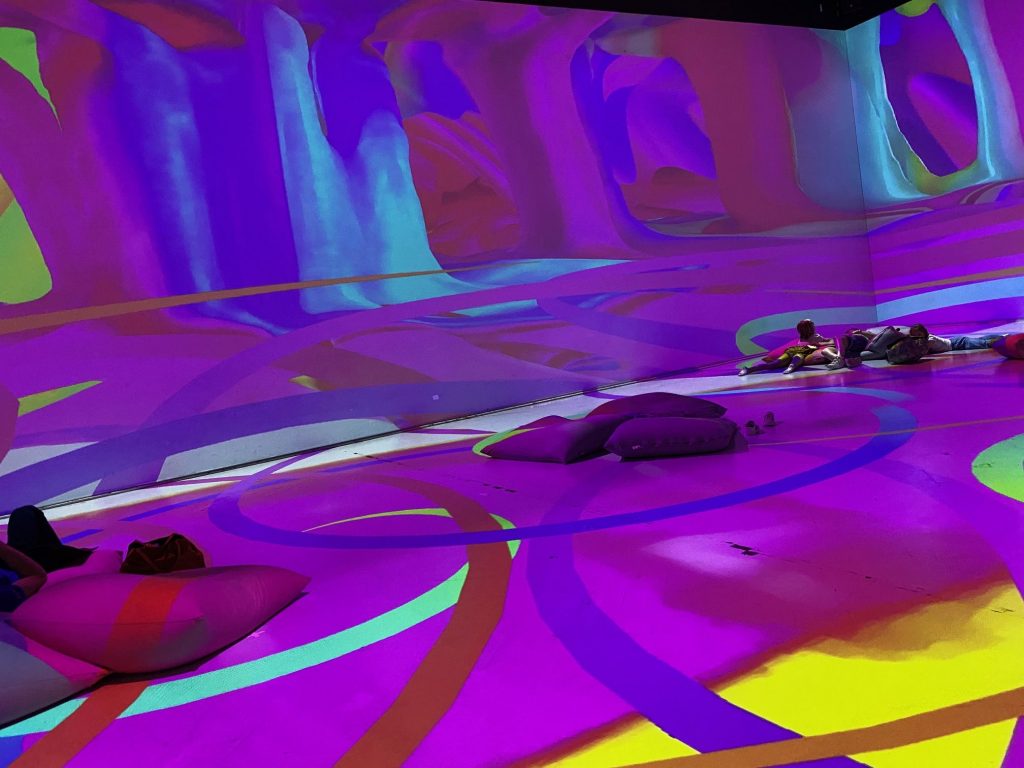
Garten
Ach es ist so schön im Garten. Ein schöner Garten will geplant werden. Das gelingt auf besondere Weise mit dem „Pollinator“. Hinter dem Pollinator verbirgt sich ein Kunstprojekt, das viele kleine Gartenkunstwerke zu einem großen verbinden möchte. Spannend ist nicht nur das Vernetzungsprojekt von vielen einzelnen Parzellen zu einem größer werdenden Gesamtprojekt (Aggregation), sondern der für Kunstschaffende gewohnte Perspektivwechsel. Aus Sicht der Bestäuber der Pflanzen und Blumen gesehen ergibt sich eine vogelähnliche Perspektive auf den Garten.
Der Parcour einer Biene oder eines Schmetterlings durch unsere Gartenparzelle regt zum Träumen an. Vielleicht hätte Franz Kafka nach der Parcour-Erfahrung ein anderes Insekt gewählt. Mir gefällt die 2D, 3D, 4D Perspektive, die es erlaubt, den blühenden Garten im Zeitraffer durch alle Jahreszeiten zu visualisieren. Das ist Gartenarbeit ohne die mühsame Kleinarbeit des Pflanzens und Unkrautjätens. Es wird nicht gleich ein Garten wie von Impressionisten in Argenteuil von Monet oder in Yerres von Caillebotte daraus, aber ein farbenprächtiges Kleinod allemal. Mein erster virtueller Versuch (Link) ist schon recht farbenfroh. Lateinische Namen auffrischen ist schon fast ein Beitrag zum gesunden Altern, besonders wenn der Garten einige Kilometer entfernt ist. Im Sommer lassen sich leicht neue Pläne schmieden. Herbst und Winter, Trockenheit und Hitze lassen uns das Gartenkunstwerk nochmals überdenken. Spielerisch ein Gartendesign gestalten, kann der erste Schritt für mehr Natur sein. Biodiversität macht Spaß und hilft uns allen. Kleinvieh macht eben auch Mist. 
Car Energy
The car industry sells more electricity-driven than diesel-cars for the first time in July 2023 (ACEA, 2023). This is a turnaround, considering the large share of the most polluting cars in the EU. It is difficult to see this as good news as newly sold diesel-cars will be around and polluting for many years to come. Hybrid cars are an own category and full of heavy additional material that allows 2 types of mobility. Tax reductions to push hybrid cars into the EU-market were very expensive for tax-payers and increasing inequality through co-financing rather expensive cars. 36,3%, the largest share, are still petrol-driven cars, with little awareness for further CO2 reductions. This is the slow evolution of the energy consumption pattern of the automotive industry in Europe.
On the energy production side there have been substantial efforts to invest in clean energy, too (IEA, 2023). With the world burning at several places already it is, after all, good news that investment in solar energy production on a global level has reached the level of investment in fossil fuels. Major drivers of this evolution are 1. China, 2. Europe and 3. The U.S. A. (unadjusted for population size) according to this investment report. Grids and storage investments rise equally to new heights, reflecting new distributional aspects of power provision within and between countries. We are in the race against the burning of our planet due to our shameless use of fossil fuels, worst in form of flying small jet planes. Besides the large company and state investments we need the spending and investment power of the masses to speed up the end of the fossil fuel age of polluting dinosaurs. Please do not replace one dinosaur (coal, oil, gas) with another one (nuclear). Too big to fail is maybe an economic rationale, but it does not withstand natural disasters (Fukushima), human failure (Tschernobyl) or war activity (Saporischschja).
(Figure source: IEA, Power investment in billion US$, 2019-2023, IEA, Paris https://www.iea.org/data-and-statistics/charts/power-investment-2019-2023.
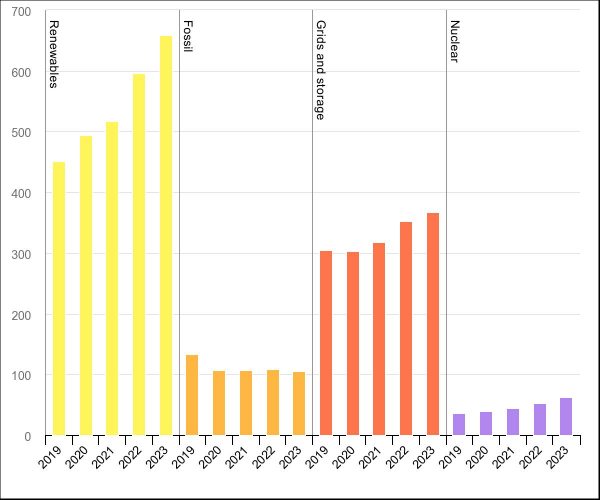
Moped
Im Osten Deutschlands schwören viele Moped Enthusiasten auf ihre Schwalbe. Italienische Mopedliebhabende wollen immer nur Vespa fahren. In den 70er Jahren gab es bereits eine kleine platz- und energiesparende Alternative. Das war die Honda Dax. Als Moped zu haben mit 50cm³ Motor bis zum Motorrad mit 125cm³ bekannt als Monkey-bike. Der 4-Takt-Motor erlaubte geräuscharme, niedrige Drehzahlen. Dazu gab es eine Fliehkraftkupplung, besser bekannt als Halbautomatik mit Fußschaltung. Tanken mit Benzin ohne Ölbeimischung, was die Mobilität einfacher machte und mal vom Reservekanister getankt werden konnte. Reichweite ohne nachtanken, ça 70 km.
Im Juli 2023 habe ich noch einige Exemplare in einem autoberuhigten Ferienort an der Nordsee gespottet. Das Motorrad wird 2023 mit 1,5 Liter/100km ausgewiesen. Eher zeitgemäß ist die elektrische Variante, die sich sauber in der Garage oder direkt an der Solarzelle laden lässt. Das hat ungefähr ein halbes Jahrhundert gedauert. Umweltbewusstsein fällt nicht vom Himmel. Der Elektromotor bietet mit 800W. Das ist mehr Kraft als ein Pedelec. Da steht einem Ausflug zu zweit, nicht zu weit, nichts mehr entgegen. Bevor die Emotionen die Überhand nehmen, mache ich meinen täglichen Spaziergang. 
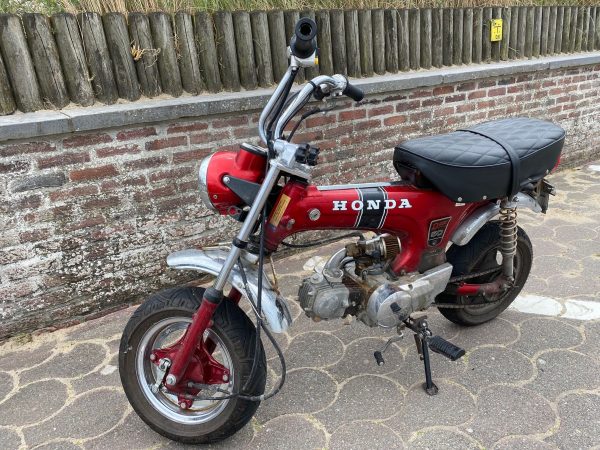
Books
Some say, a book is a book, is a book. This is to reiterate the lasting effect a printed volume might have. Many books are a form of a documentation of facts. Creative writing in whatever form finds most of the time some way into a format of a book. For centuries books have facilitated the diffusion of myths and stories throughout societies including translated versions of the content. 2 aspects are constituent here (1) form and (2) content. Annual book fairs receive most attention for new content within more or less the same rectangular format. There are, nevertheless, interesting variations of the form to be discovered as well. Traditionally book binding was the art that gave shapes to the content. Images in form of film are yet another representation of the book content. All this is “dealt” with at the Frankfurt book fair #fbm23, particularly in form of dealing in and with copyrights. New forms of delivery of content, online or as e-book, have added to the variety of books. Pay as you go or as abonnement with monthly delivery is the old and maybe fashionable new way to digest abundant content. People trust in books. The format as book in general seems to remain an authoritative form to present content, irrespective of the truthful or fictional kind of the content. The more we live in insecure circumstances, the more we tend to be willing to hold on to a pile of paper nicely woven or clued. It is still a very powerful tool to guide imagination for all ages. It allows us to learn at our own rhythm as far as we are willing to go. We are, or seem to be, in control of the process as well as the likely outcome. And yet, the spice of life is the surprise. Book it.

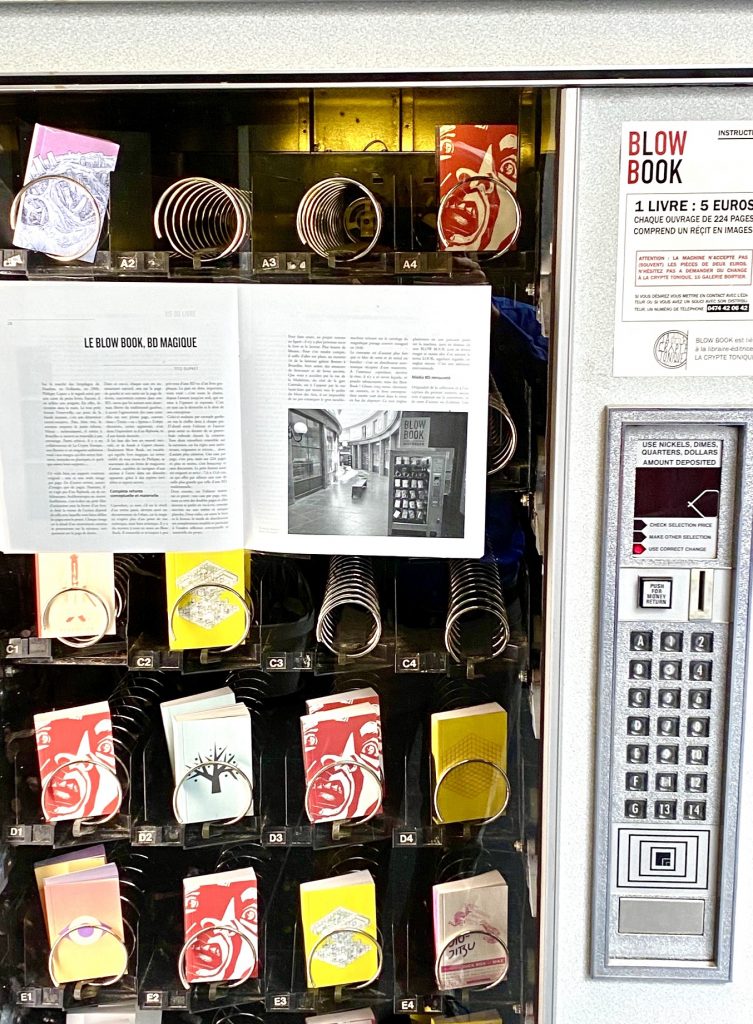
Smurf SDGs
The smurf series of comics has been a world-wide success as children-books. Many adults enjoy re-reading some of their old comic books to their children or grand-children. Now let us try it the other way around. Our children try to sell us the concern for the environment by talking to us through the designs of smurfs, Schlümpfe or Strümpfe, as they are called in various translations. Maybe this way we are more open to take a serious look at the Strategic Development Goals (SDGs) of the UN. Easily accessible and getting us through an emotional connection might work better than tedious lengthy documents and statistics of continuous failure (e.g. on hunger) of most parts of the world.
Tell the story of the smurfs with the SDGs in mind. See how far you get in remembering the whole list of 17 stories. Build a narrative around each of the images. There is no way around getting nearer these goals for our very own survival as a species. Intergenerational communication works both ways from young to old as well as from old to young. Design your own characters, if you like, with the same SDGs in mind. Only this way we shall broaden the supporters for the goals beyond the expert circles of politicians and policy advisers. Happy drafting and rapid implementation! We can do it, if we want to. 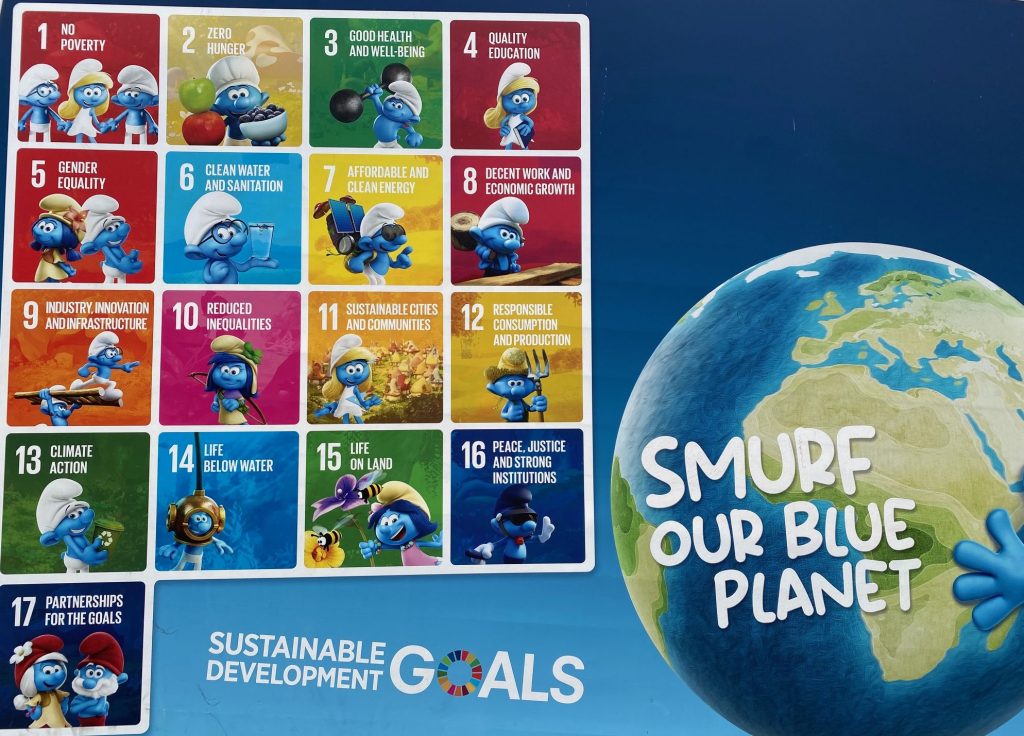
Hunger
The UN strategic development goals (SDGs) list after the eradication of hunger as number 2 no hunger by the year 2030. Following the report of FAO, the UN 🇺🇳 organization in charge of nutrition in a larger sense, the world is moving further away from reaching this goal in the 4 last years. The Covid-19 pandemic had disrupted supply chains and caused higher prices for basic ingredients. The poorest countries were most vulnerable to such price increases when even in the rich world government deficits were rising sharply. Before sufficient relief arrived Russia’s war in Ukraine destroyed crops, interrupted again supply chains from Ukraine to many of the poorest nations. Energy prices are a substantial part in the production of fertilizers for agricultural products. Same story Russia disrupted the whole supply chains for food production at affordable prices for the poorest parts of the world. Additionally, Indian food production was lower due to the drought, Pakistan had extreme flooding. Both countries are important export nations for feeding the world. Continuing climate change is likely to put global food production under additional pressure. Price rises will hit the poorest again and again. Feeding animals with crops that could otherwise alleviate hunger in other parts of the world puts the rich world’s consumption patterns also into the spotlight. Fighting global hunger is largely a question of how wealthy nations deal with nutrition. The struggle to fight obesity and hunger under the joint concern of malnutrition unites all parts of the world. Time to act together on both topics.

Peace and AI
Rather than asking AI to draft a peace treaty, I used AI to generate images to illustrate my blog entry on strategic thinking and peace deals. My own bias for impressionistic images in art have guided my choice previously. The alternative suggestions from AI based on BING reveals the progressive as well as stereotypical creation of images through algorithms. Same gender in all images, even if the women only image is rather progressive, but as a matter of fact women still tend to be involved less in warfare. The racial stereotypes of AI in image creation also needs attention as the 2 POC persons are depicted in an unfavorable way, not one of strength as for the caucasian stereotype. Living with AI is a joint learning process, likely to be a long one, too. Critical assessment of output remains a human task and we need to train people how to critically and carefully analyze the flood of images in addition to photos.


Züge
Wer heutzutage mit dem Zug verreisen möchte braucht starke Nerven. Eine lange im Voraus geplante kostengünstige Reise kann dann schon mal zu unerwarteten Kapriolen führen. Jede Person wird wissen, dass eine Reise zum 14.Juli nach Paris ein besonderer Anlass ist. Normalerweise wird Revolution gemütlich gefeiert und nicht Revolution gemacht. Die Befürchtung ist jedoch im Juli 2023 könnte das anders sein. Die Gewalt an Jugendlichen und in der Folge von Jugendlichen war schließlich erst vor einigen Tagen mehrfach eskaliert. SozialwissenschaftlicherInnen führen dabei nebenbei Feldstudien durch.
Aber eigentlich war die Reise mit dem Zug schon Monate vorher geplant. Jetzt kommt es anders. Die THALYS Gesellschaft hat in ihrer App allerdings eine Gebühr für das Umbuchen fest verankert, selbst wenn es eine erzwungene Umbuchung ist. Also rein ins Geschäft, Wartenummer ziehen und Warten, Warten und nochmals, na was schon, Warten.
Zum Zeitvertreib wird ein Geschichtendrucker bereitgestellt. Ouf, Kurzgeschichten und Comics. Das macht Hoffnung beim, na was schon, Warten. Aber irgendwann fahren wir dann ganz schnell mit dem Hochgeschwindigkeitszug nach Paris. Aber da wir doch bitte 30 Minuten vorher auf dem Bahnsteig sein sollten, wissen wir schon, wir werden, na was schon, Warten. Mein Mantra bleibt: Mit der Bimmelbahn mag ich gerne fahren, die fährt langsam und kommt trotzdem an.
Geister
“ Herr, die Not ist groß!/ Die ich rief, die Geister/ werd ich nun nicht los.“ Dieses Zitat aus dem Zauberlehrling von Goethe aus dem Jahr 1797 könnte im Juli 2023 von Putin ausgerufen worden sein. Als der von ihm geförderte und üppig finanzierte Chef der Wagner-Armee Prigoschin plötzlich auf Moskau losmarschierte. So sehen das viele Analysten zu Beginn des scheinbaren Angriffs auf Moskau eigener Söldnertruppen. Frei nach Goethe fragen wir uns also: Wer und Wo ist der Meister? Wer ist hier der Zauberlehrling? Aber schon Goethe hat seine Ballade rasch und ohne Überraschung aufgelöst. „In die Ecke, Besen, Besen! Seids gewesen. Denn als Geister ruft euch nur zu seinem Zwecke, erst hervor der alte Meister.“ So entpuppt sich am Ende Putin wohl als der Meister und Progoschin „nur“ als sein Zauberlehrling.
Das ist nicht die herrschende Meinung der Redakteure und Editorialisten (Süddeutsche, LeMonde). Literatur der Romantik sollte besser aus der Tagespolitik herausgehalten werden. Weit gefehlt. Sie weitet den Blick auf Herrschende, meist Autokraten, und ihre tragischen Lebensverläufe.
Jetzt mal eine ernsthafte Vision(?) eines Politikberaters. Da die Mission von Prigoschin mit Unterstützung oder angeordnet von Putin in Butcha als abgeschlossen galt, und das Staatsheer diese Aufgabe übernommen hatte, wäre Prigoschin arbeitslos geworden. Den treuen Chefkoch Prigoschin aus St. Petersburger Zeiten, der Putin in seinen Restaurants schon hätte vergiften können, hat seinem Meister vorgeschlagen, Putins faktischen Schutz vor einem Anschlag oder einer militärischen Einsatzgruppe zu testen.
Militärisch gesprochen, läuft das entweder unter einer „false flag attack“, eines mit russischer Flagge getarnten Angriffs, oder einer „white flag attack“, dem Vorspiegeln einer geschützten friedlichen Mission (vgl. trojanisches Pferd).
Aus der Sprache der Börsianer kennen wir ebenfalls die „weiße Ritter“ Attacken. Dabei versucht ein anderes Unternehmen, eine InvestorIn oder eine im Hintergrund agierende Person (Progoschin), eine feindliche Übernahme eines Unternehmens zu verhindern. Dabei sind Mehrheitsbeteiligungen am Zielunternehmen oder Fusionsangebote die gewollte Lösung und Abwendung der feindlichen Übernahme.
Im Internetzeitalter kennen wir die bezahlten Hacker, die eine Webseite eines Unternehmens oder Behörde auf Schwachstellen testen und damit Datenschutz, Erpressung und Ausfälle vermeiden helfen.
Klingt alles kompliziert, ist es aber nicht. Es ist einfach Teil des modernen Arsenals von Strategen à la Clausewitz. Schachspielen mit echten Söldnern ist grausam und kostet echte Menschenleben für den Machterhalt. Der militärische Probealarm wurde getestet und der Schutz um Putin, den Meister mit seinem Zauberbesen kann verbessert werden. Sein Zauberlehrling Prigorschin ist wohl vielleicht sogar vom Springer (Schachfigur) in einen Turm eingetauscht worden. Vielleicht ist er aber schon längst die Dame an der Seite des Königs oder eben einer der Geister im Umfeld von Putin.






